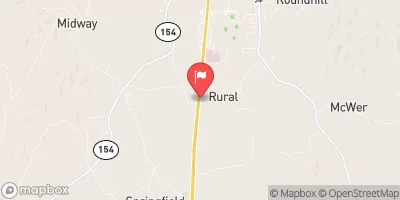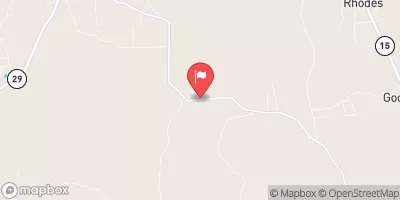Washington County Public Lake Reservoir Report
Nearby: Lake Ola Dam Ms06410 Lake Dam
Last Updated: December 26, 2025
Washington County Public Lake, also known as Emmit Wood Lake Dam, is a state-owned recreational gem located in West Millry, Alabama.
°F
°F
mph
Wind
%
Humidity
Summary
Built in 1969, this earth dam stands at a structural height of 31 feet and has a hydraulic height of 25 feet. With a storage capacity of 770 acre-feet and a maximum discharge of 6000 cubic feet per second, this dam on TR-Crosbys Creek provides a serene setting for outdoor enthusiasts to enjoy water-based activities.
The dam, managed by the state of Alabama, offers a tranquil retreat for fishing, boating, and picnicking in the heart of Washington County. While the dam's hazard potential is classified as significant, it is currently rated as 'Not Rated' in terms of condition assessment. Despite lacking a formal emergency action plan and inundation maps, the dam's risk management measures and overall safety protocols are yet to be fully documented and assessed.
For those interested in water resource and climate conservation, Washington County Public Lake presents an intriguing case study in state-owned recreational infrastructure. With its scenic surroundings, diverse recreational opportunities, and potential risk factors, this dam serves as a focal point for ongoing discussions on dam safety, emergency preparedness, and sustainable water resource management in the region.
Hydraulic Height |
25 |
Year Completed |
1969 |
Structural Height |
31 |
Nid Storage |
770 |
River Or Stream |
TR-CROSBYS CREEK |
Dam Length |
1426 |
Hazard Potential |
Significant |
Primary Dam Type |
Earth |
Nid Height |
31 |
Seasonal Comparison
Weather Forecast
Nearby Streamflow Levels
Dam Data Reference
Condition Assessment
SatisfactoryNo existing or potential dam safety deficiencies are recognized. Acceptable performance is expected under all loading conditions (static, hydrologic, seismic) in accordance with the minimum applicable state or federal regulatory criteria or tolerable risk guidelines.
Fair
No existing dam safety deficiencies are recognized for normal operating conditions. Rare or extreme hydrologic and/or seismic events may result in a dam safety deficiency. Risk may be in the range to take further action. Note: Rare or extreme event is defined by the regulatory agency based on their minimum
Poor A dam safety deficiency is recognized for normal operating conditions which may realistically occur. Remedial action is necessary. POOR may also be used when uncertainties exist as to critical analysis parameters which identify a potential dam safety deficiency. Investigations and studies are necessary.
Unsatisfactory
A dam safety deficiency is recognized that requires immediate or emergency remedial action for problem resolution.
Not Rated
The dam has not been inspected, is not under state or federal jurisdiction, or has been inspected but, for whatever reason, has not been rated.
Not Available
Dams for which the condition assessment is restricted to approved government users.
Hazard Potential Classification
HighDams assigned the high hazard potential classification are those where failure or mis-operation will probably cause loss of human life.
Significant
Dams assigned the significant hazard potential classification are those dams where failure or mis-operation results in no probable loss of human life but can cause economic loss, environment damage, disruption of lifeline facilities, or impact other concerns. Significant hazard potential classification dams are often located in predominantly rural or agricultural areas but could be in areas with population and significant infrastructure.
Low
Dams assigned the low hazard potential classification are those where failure or mis-operation results in no probable loss of human life and low economic and/or environmental losses. Losses are principally limited to the owner's property.
Undetermined
Dams for which a downstream hazard potential has not been designated or is not provided.
Not Available
Dams for which the downstream hazard potential is restricted to approved government users.







 Washington County Public Lake
Washington County Public Lake